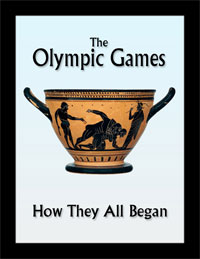While Constantine the Great (r. 306–337 CE) is remembered as the first Christian emperor, it is sometimes forgotten that it was only around 70 years after his reign that pagan belief was banned and Christianity became the official religion of the Roman Empire. Indeed, a newly excavated temple in Spello, Italy, shows that traditional Roman religion remained strong and even received formal imperial support under Emperor Constantine.
Constantine’s Imperial Cult
Although scholars have long known that it took decades for paganism to recede from everyday Roman life, many questions have remained about exactly when and how traditional beliefs and practices began to be phased out. The excavations of Spello’s Roman temple may demonstrate that the process was much slower and less drastic than many had assumed, all because of one intriguing letter written by Emperor Constantine himself.
Written to the townspeople of ancient Spello, about 100 miles north of Rome, the letter permits them to celebrate a traditional religious festival in their town rather than having to travel outside. In return, Constantine instructs them to erect a temple to his deified ancestors, the Flavians, and worship them. The archaeological team believes this may be the very temple that was discovered in Spello. Although only a portion of the temple has been excavated, the team believes it will be the “largest evidence ever of the imperial cult in both fourth-century Italy and the late Roman Empire.”
“There was a remarkable religious continuity between the Roman world and the early Christian world,” said archaeologist Douglas Boin of Saint Louis University. “Things didn’t change overnight. Before our find, we never began to imagine the size of the actual physical, religious sites that could be associated with this late imperial cult practice.”

The Spello temple serves as proof that Constantine’s conversion to Christianity did not bring an end to earlier Roman practices, some of which—like the imperial cult—even continued to be supported by the Christian emperors themselves. Instead, the shift to Christianity was a slow change in which many Roman religious practices continued in the face of an increasingly Christian empire.
“There’s evidence from other places throughout the Roman world that Christian rulers supported imperial cult practices,” continued Boin. “We’ve known that pagans worshiped at their temples in the fourth century, but those findings have all been small and inconsequential. And we’ve known that Christians supported the imperial cult. This perceived temple would bridge those two landmarks, and in that respect, it is unlike any temple that I know about from the Mediterranean world of the fourth-century Roman Empire.”
The temple was discovered after an extensive project to scan for buried buildings and features beneath the surface of the town. A season of excavations revealed several walls of what appears to be a much larger temple than the excavation team had expected to find. Further excavation will continue to reveal more of the temple’s intriguing insights into the transition between Christianity and paganism under Constantine and his successors.
Read more in Bible History Daily:
All-Access members, read more in the BAS Library:
A Rare Look at the Jewish Catacombs of Rome
The Death and Burial of St. Peter
Did the Temple Menorah Come Back to Jerusalem?
Not a BAS Library or All-Access Member yet? Join today.The post Paganism Under Constantine appeared first on Biblical Archaeology Society.



0 Commentaires